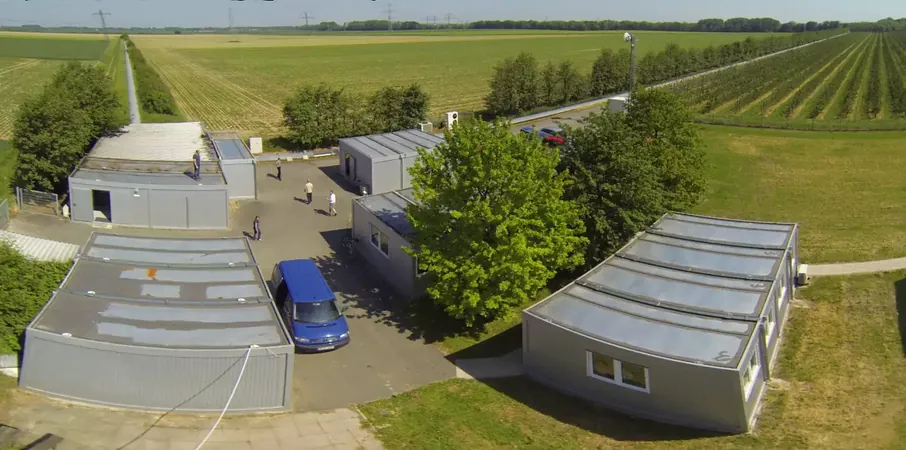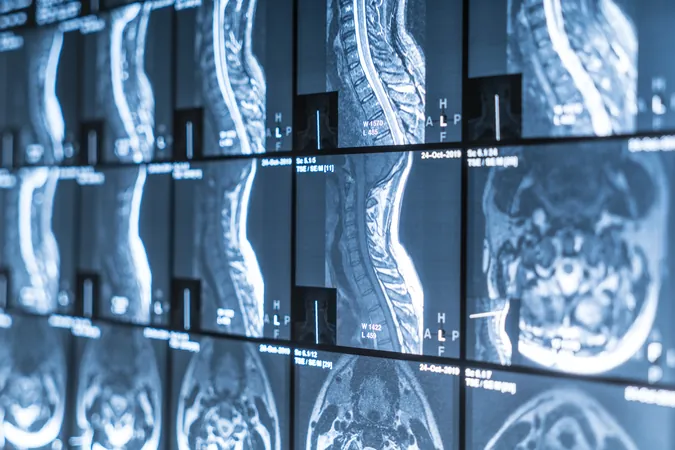
Unlocking the Secrets of the Universe: How Mirror Adjustments Could Capture High-Frequency Gravitational Waves!
2025-07-08
Author: Nur
Gravitational Waves: The Mysteries of the High Frequencies
Gravitational waves come in all shapes, sizes, and frequencies, yet the elusive higher frequencies have remained undetected. These higher frequencies could revolutionize our understanding of cosmic phenomena like boson clouds and miniature black hole mergers. Exciting new research from a collaborative team at Notre Dame and Caltech, spearheaded by PhD student Christopher Jungkind, unveils a groundbreaking method to harness the GEO600 observatory’s capabilities for the first time.
GEO600: The Unsung Hero of Gravitational Wave Detection
Nestled in Germany, GEO600 has been in the gravitational wave detection game for over two decades. Recently, it underwent a major upgrade to its laser and data collection systems, enhancing its observational prowess. However, Jungkind and his team believe there's another key feature—its mirrors—that can be optimized for improved sensitivity, particularly at higher frequencies.
Amplifying Signals with a Twist: The Detuning Angle
Central to GEO600's function is its signal-recycling mirror (MSR), a component that amplifies gravitational wave signals by creating a recycling cavity. Typically adjusted to enhance signals within the 10 to 1000 Hz range, Jungkind's paper suggests that a simple shift in the MSR's angle, known as the ‘detuning angle,’ could significantly boost sensitivity to higher frequencies.
Modeling the Future: Simulations Reveal Potential
The researchers turned to Finesse 3.0, a sophisticated simulation tool, to model the impact of adjusting the detuning angle. By factoring in various noise sources, including seismic and quantum noise, they demonstrated that increasing this angle could substantially heighten the detector’s sensitivity. The results hinted that GEO600 could surpass the capabilities of advanced LIGO in picking up gravitational waves above 6 kHz.
What This Means for Science: The Vector Boson Cloud Detective
In practical terms, this means GEO600 could become a pioneering tool for detecting gravitational waves generated by vector boson clouds—unique entities that surround black holes. Unfortunately, its chances of capturing signals from scalar boson clouds are slim, as the latter produce much weaker signals. The frequency of gravitational waves is intricately linked to the mass of the bosons, with vector boson clouds potentially emitting signals detectable by the newly enhanced GEO600.
The Challenge of Black Hole Mergers
The research also touches on detecting mergers of sub-stellar mass black holes. While GEO600 could theoretically observe these events, it may struggle to compete with other detectors like aLIGO, as the gravitational signals from these mergers predominantly occur at lower frequencies.
The Road Ahead: Mirror Adjustments and Engineering Feats
The proposed improvements could grant astronomers fresh insights into boson clouds and gravitational waves. However, implementing these adjustments isn’t straightforward; engineers will need to establish a feedback loop between the sensor and the mirror’s actuation. For now, simulations provide a glimpse into a future where high-frequency gravitational wave detection could propel our understanding of the universe.




 Brasil (PT)
Brasil (PT)
 Canada (EN)
Canada (EN)
 Chile (ES)
Chile (ES)
 Česko (CS)
Česko (CS)
 대한민국 (KO)
대한민국 (KO)
 España (ES)
España (ES)
 France (FR)
France (FR)
 Hong Kong (EN)
Hong Kong (EN)
 Italia (IT)
Italia (IT)
 日本 (JA)
日本 (JA)
 Magyarország (HU)
Magyarország (HU)
 Norge (NO)
Norge (NO)
 Polska (PL)
Polska (PL)
 Schweiz (DE)
Schweiz (DE)
 Singapore (EN)
Singapore (EN)
 Sverige (SV)
Sverige (SV)
 Suomi (FI)
Suomi (FI)
 Türkiye (TR)
Türkiye (TR)
 الإمارات العربية المتحدة (AR)
الإمارات العربية المتحدة (AR)